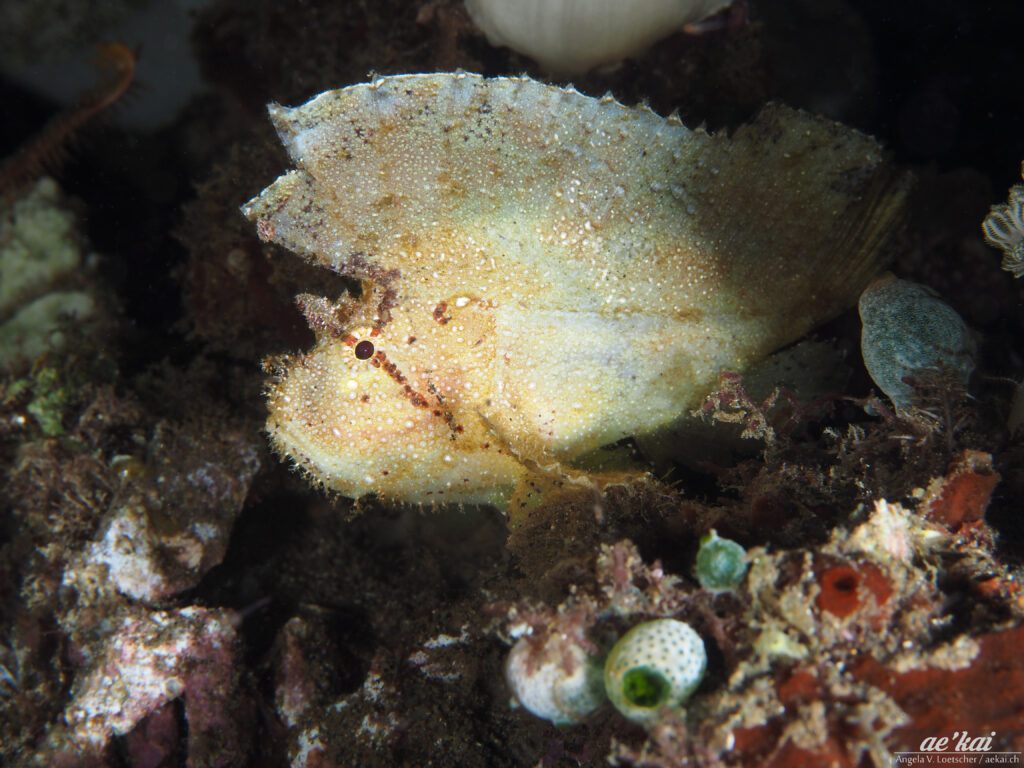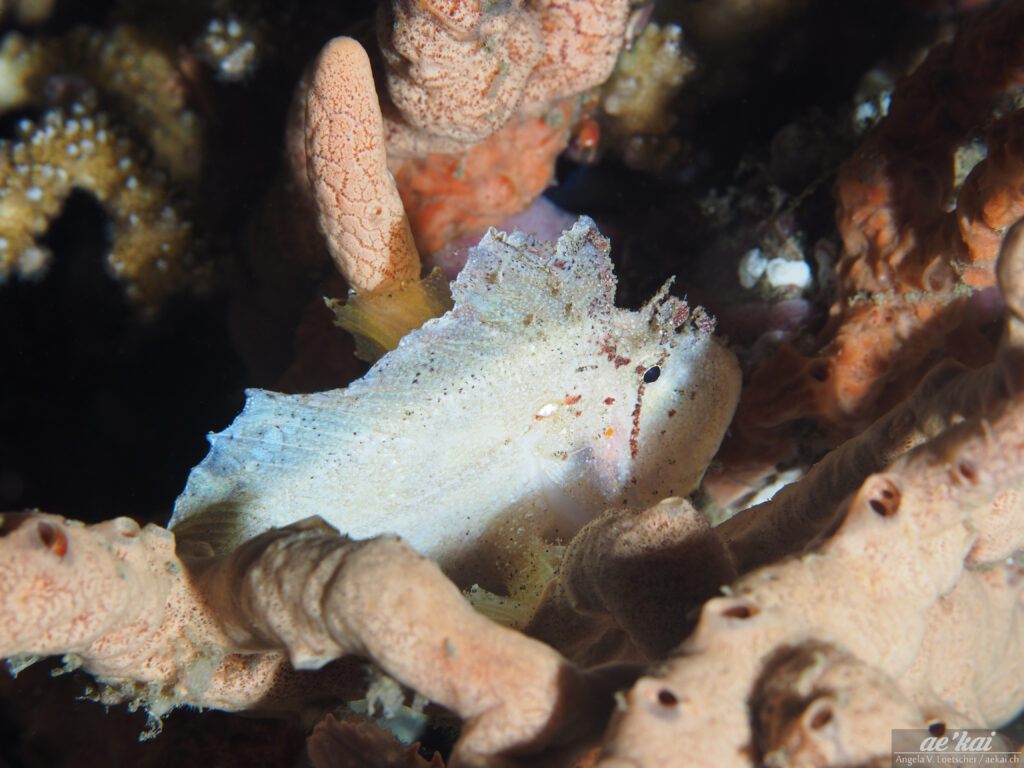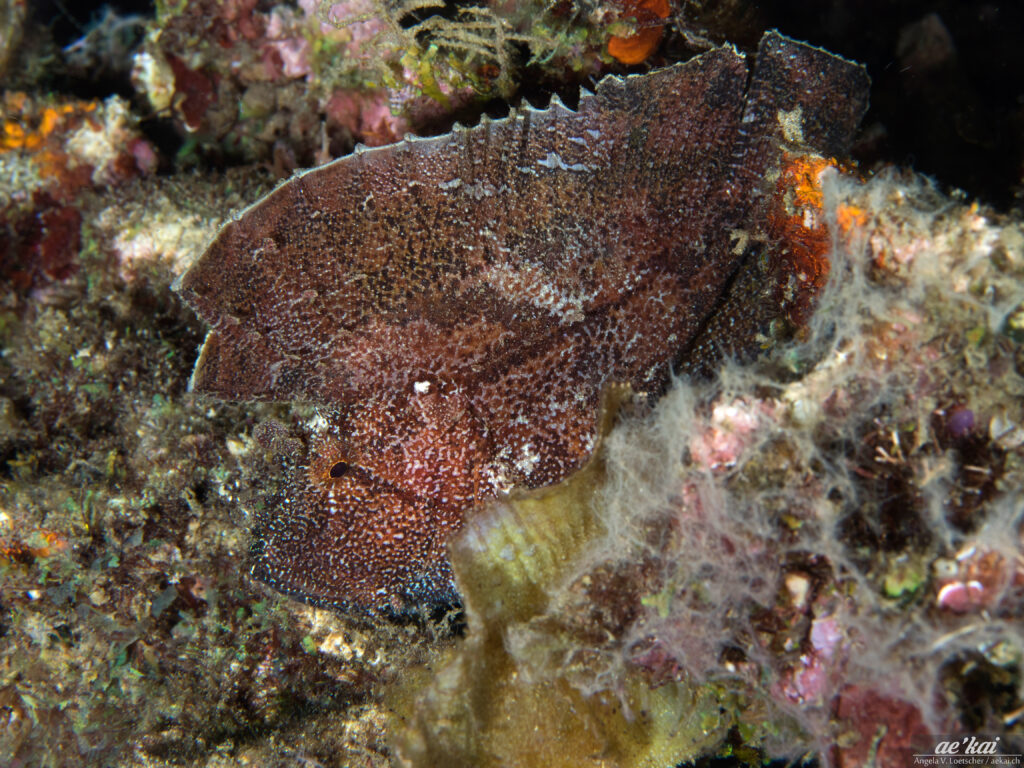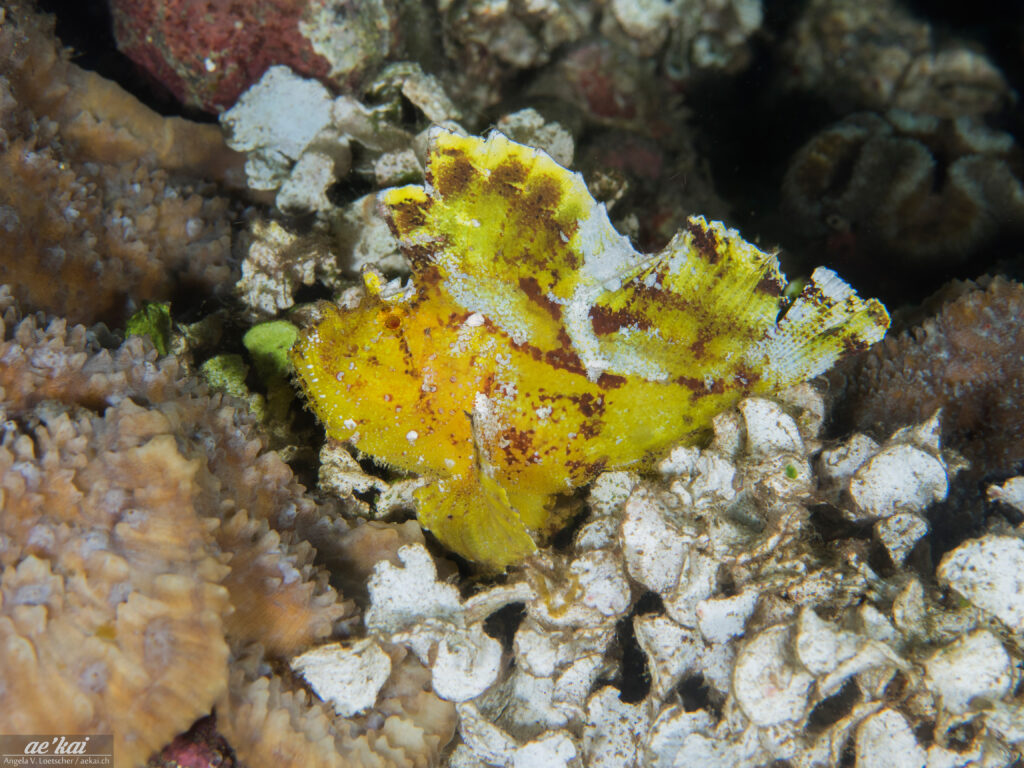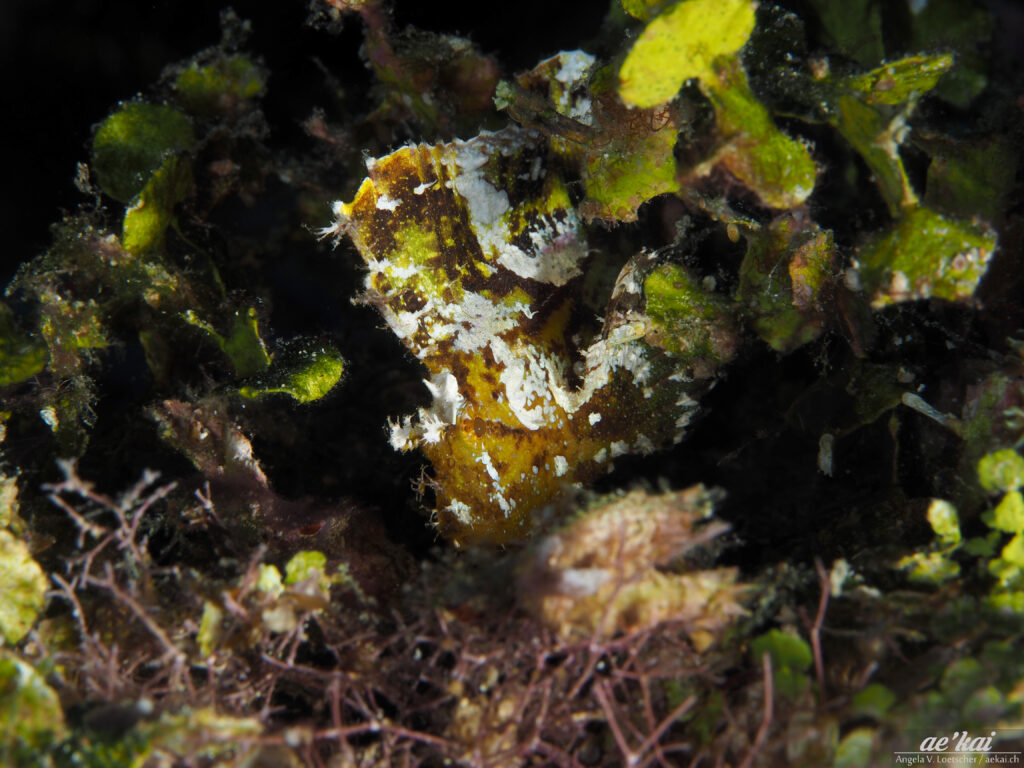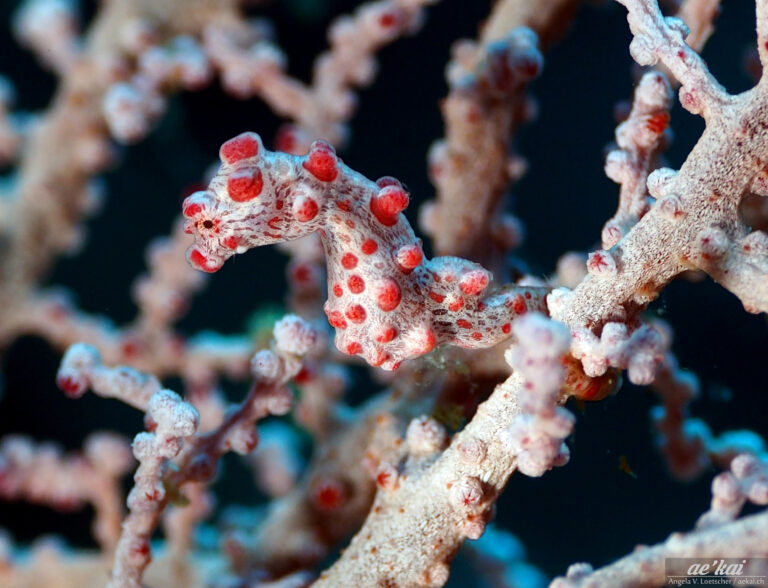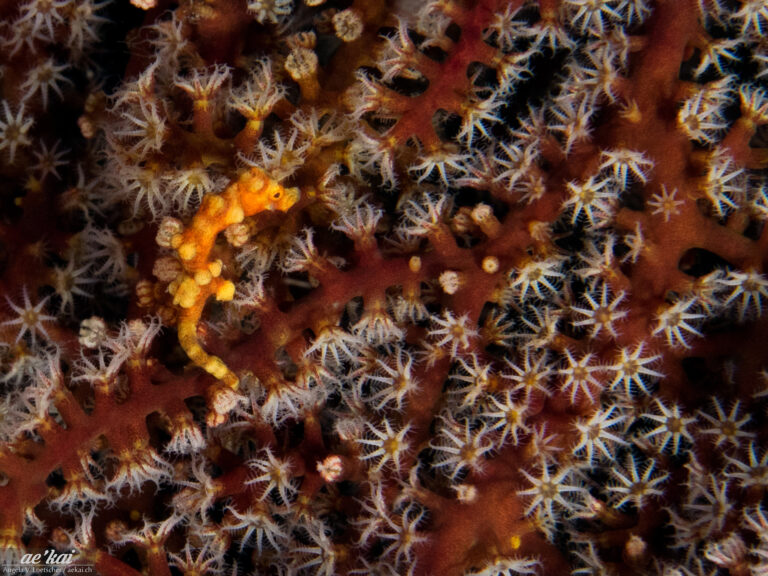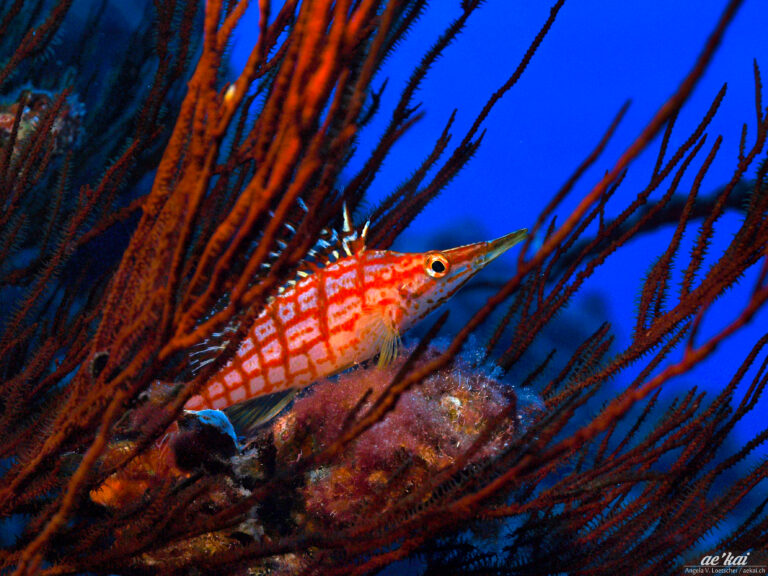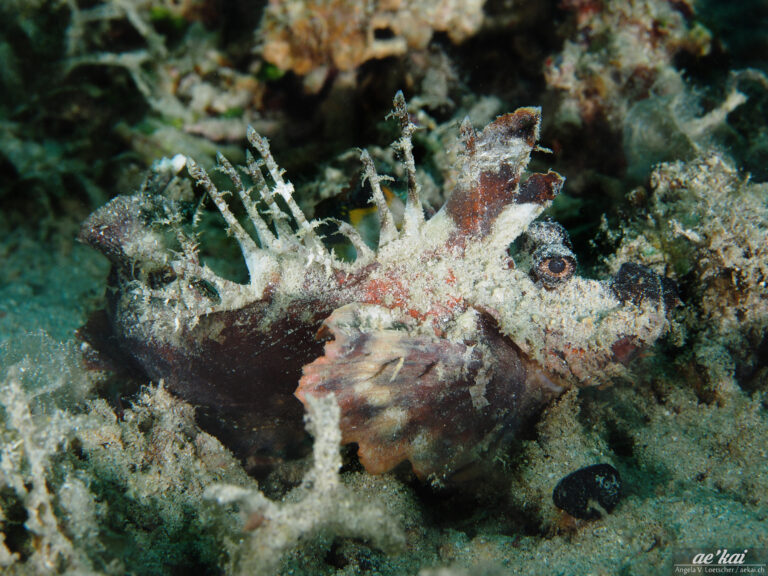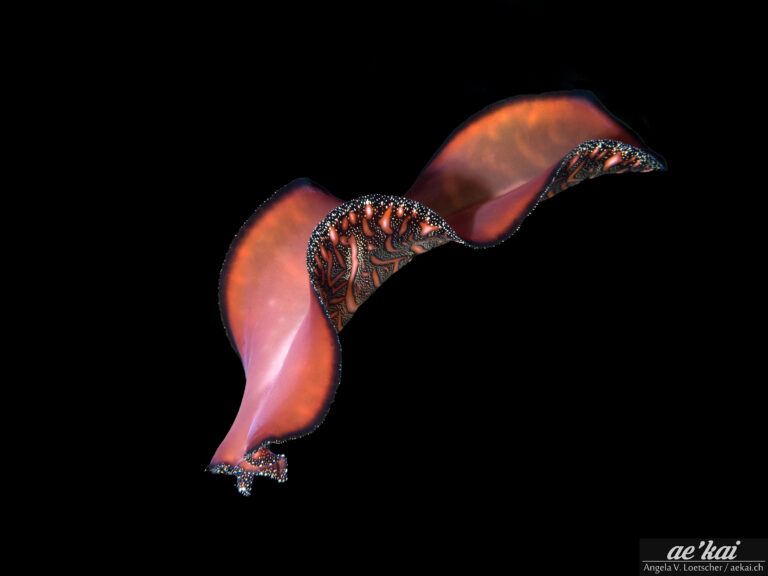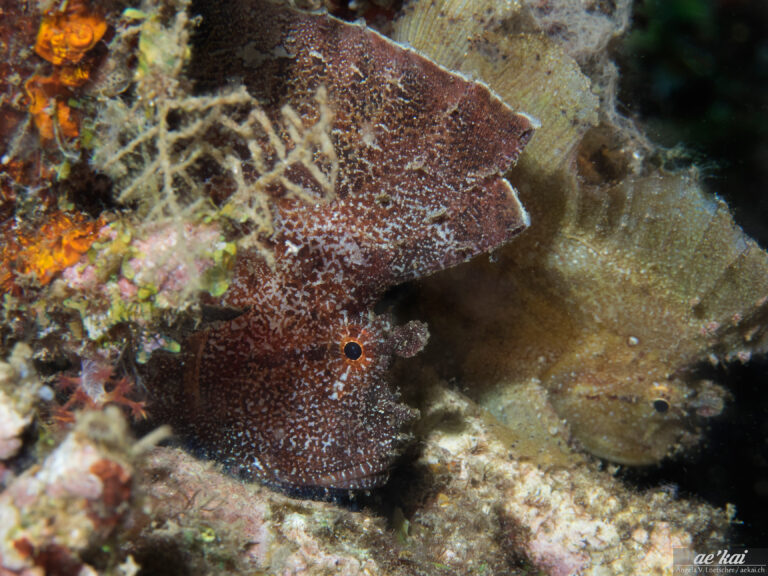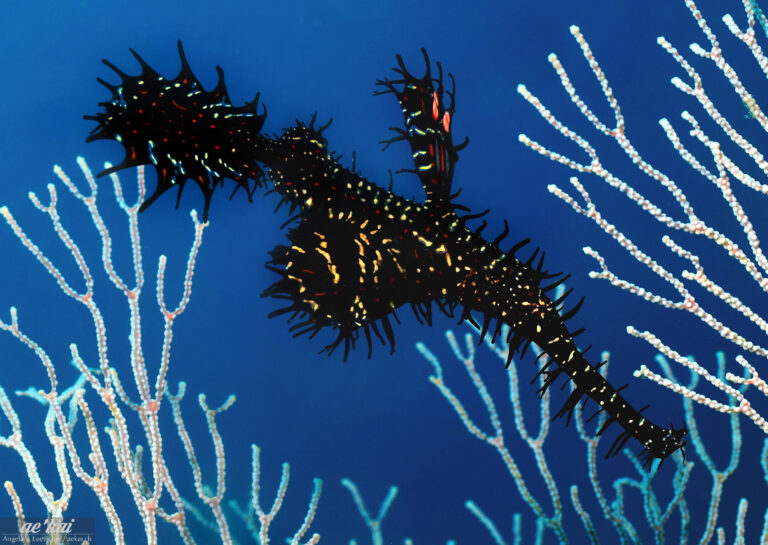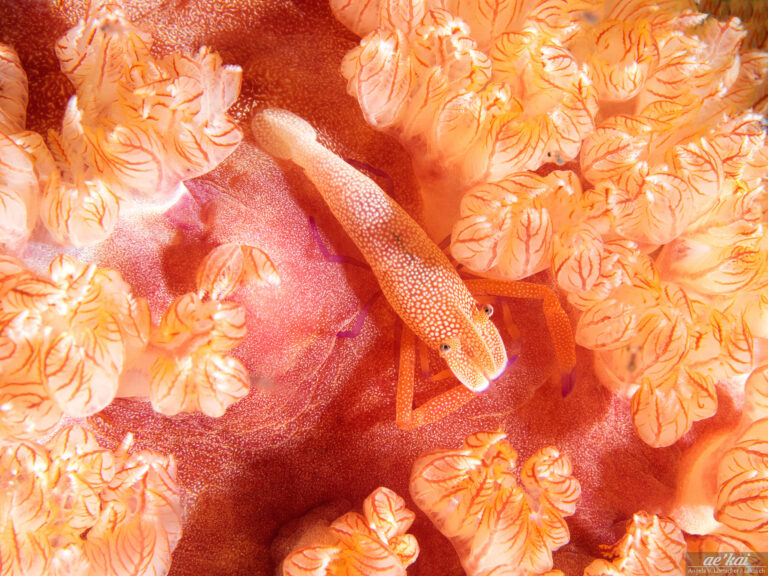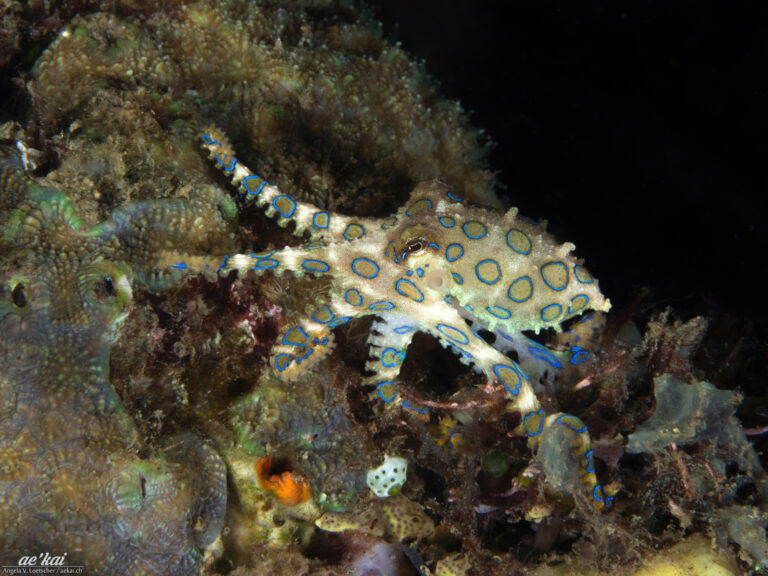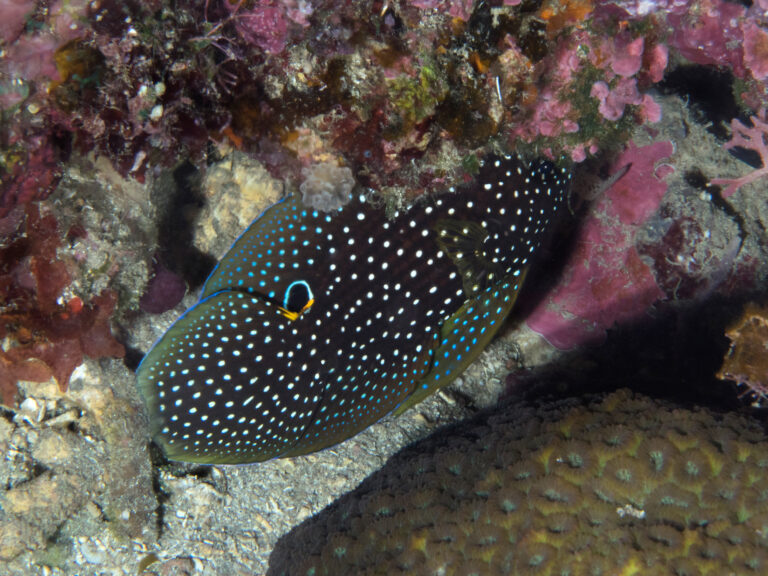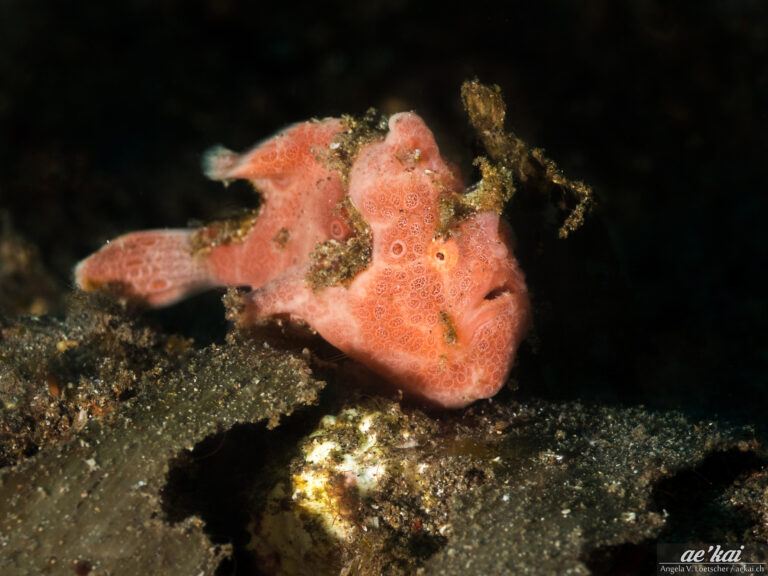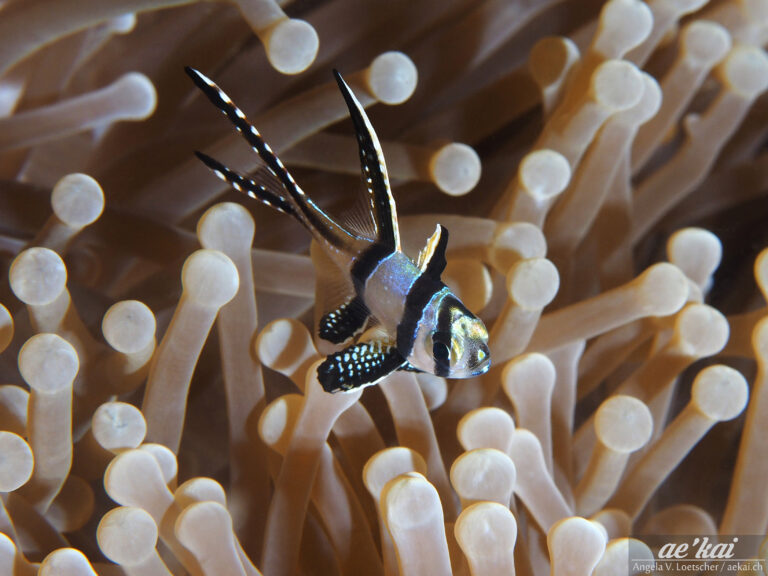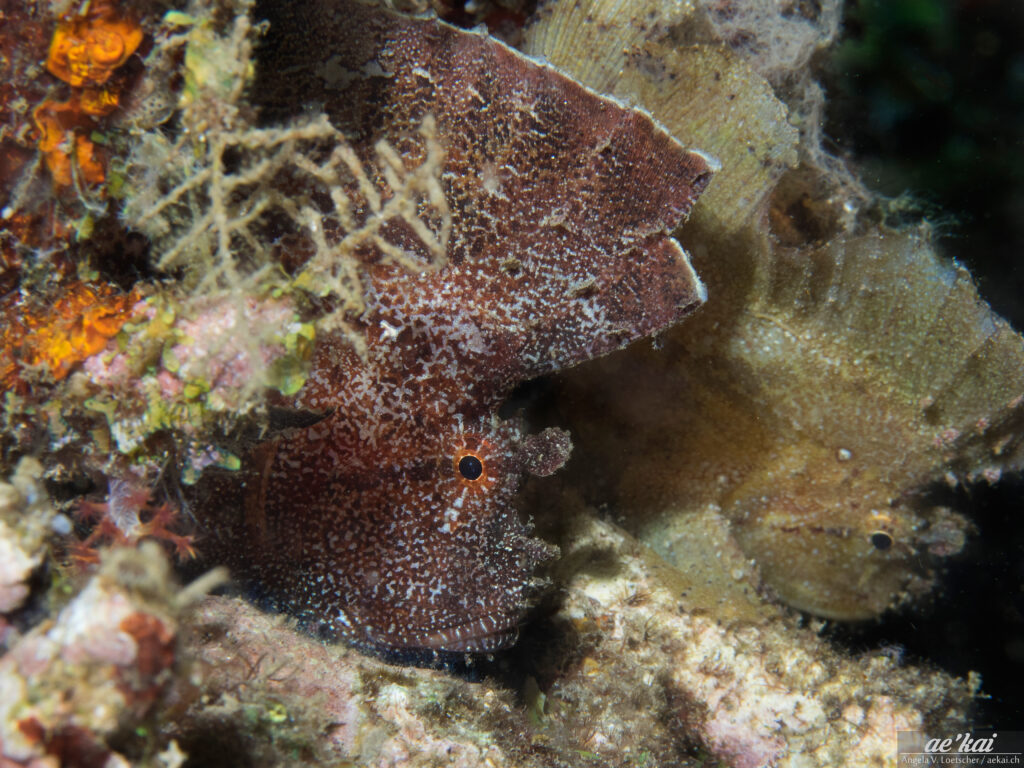
EN: Leaf Scorpionfish | Leaf Fish | Paperfish
DE: Schaukelfisch
Familly
Scorpionfish
(Scorpaenidae)
Size
max. 10 cm
Diet
Carnivore
Distribution
Indo-Pacific
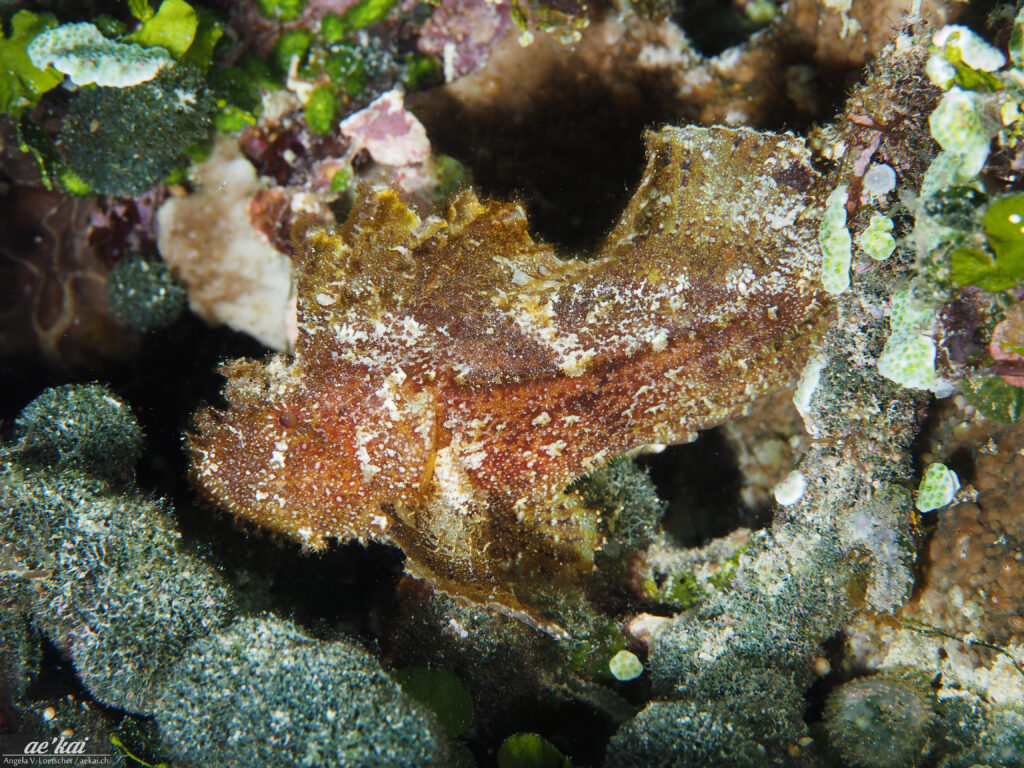
The Leaf Scorpionfish (Taenianotus triacanthus) belongs to the family of the Scorpionfish (Scorpaenidae) and lives in the entire Indo-Pacific. It can be found in coral reefs and algae beds, at depths of up to 130 meters (usually between 5-20 meters). It is a carnivorous ambush predator that feeds on fish and crustaceans.
The body is laterally flattened and the dorsal fin is always raised. The shape of the body and its behavior (see below) imitates a dead leaf (leaf mimicry). The basic color of the body varies strongly from black, brown, green, white, yellow, red and up to pink. Spots make the camouflage perfect. Around the mouth it has skin fragments, which are often covered by algae and small hydrozoans. Its mouth opening runs steeply downwards. The leaf fish sheds its skin every 10-14 days and after shedding it can change color. It can reach a length of up to 10 cm.
Behavior
The Leaf Scorpionfish lives alone or as a pair and sits on hard corals, stones or coral-near on the sand and waits for its prey. It sits, waits and when prey is in sight, it swings like a leaf back and forth while sneaking up on the prey.
This tactic also works, because thanks to the perfect camouflage, the prey believes he is a leaf swaying in the water and does not see the danger until it is too late. If the Leaf Scorpionfish is close enough, it swallows its prey by suddenly opening its mouth and causing suction. It eats prey that is up to half its size. As long as there is enough food, it remains quite location-loyal. If it feels threatened by a larger species, it shows the same rocking behavior. This serves to confuse the larger fish, which usually also falls for the leaf imitation.
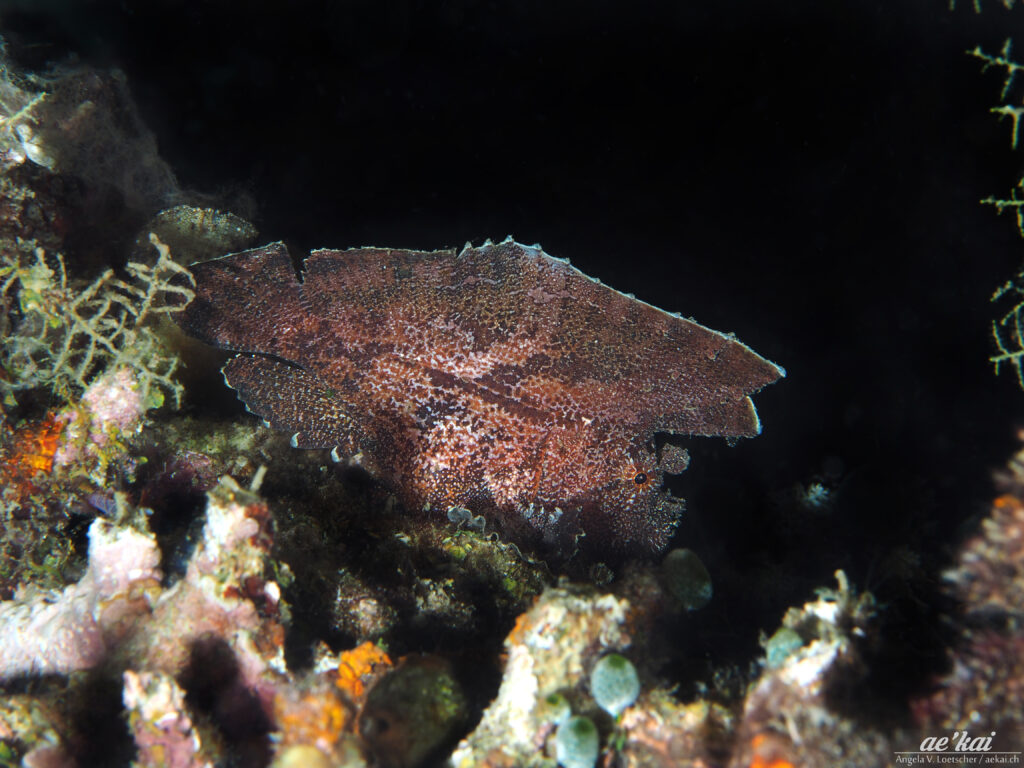
Venom
Typically for scorpionfish, the Leaf Scorpionfish is also venomous. The poison-glands sit within the fin rays. However, the leaf fish is not quite as venomous as some relatives, and no deaths are known in connection with Leaf Scorpionfish.
Mistaken Identity
They are often confused with species from the family of Waspfish (Tetrarogidae), which have similar fins on the head. In order to distinguish the leaf fish from the Waspfish, one must actually only pay attention to the form of the dorsal fin: Waspfish have a strongly pointed shape of fin on the top of their head. The first fin ray of the dorsal fin is located behind the head with the Leaf Scorpionfish, while with the Waspfish it is located at the level of the eyes, which is also a typical characteristic for this family.
